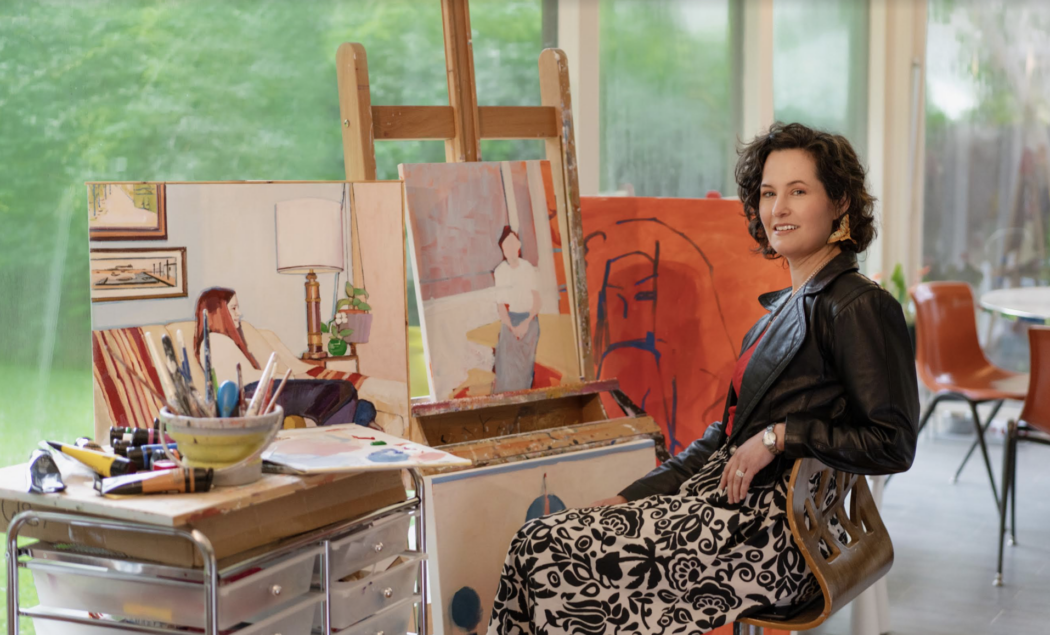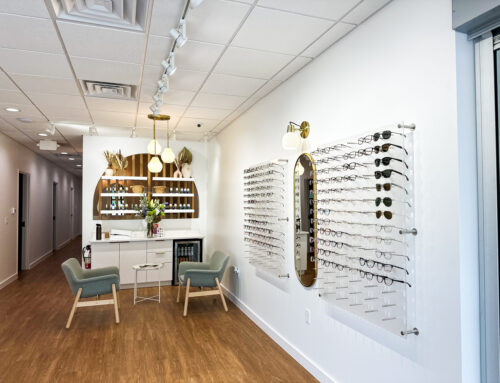
Photography courtesy of Liz Jordan.
Motherhood. It’s exhausting, chaotic, tender, fulfilling and humorous, at times, but it’s also a beautiful experience.
Motherhood is work, but it can also be a work of art.
Liz Jordan started thMTHRshp Gallery as a space to feature works by women, mothers, LGBTQ individuals and other minority and disabled artists.
In addition to representing marginalized artists, thMTHRshp breaks from gallery norms by paying them a commission that supports not only the artists’ living costs, but the the living costs of their families.
“I don’t know of another gallery that’s really focusing on representing moms,” Jordan says.
Jordan had her first child in 2018. Just as she was learning to tackle the terrible twos, the COVID -19 shut downs began. Learning to be a parent in the midst of a global pandemic was a dark time, but art was her escape.
It was also an escape for Sarah Barnett, who Jordan met at a local park. The two became friends, and their relationship grew as their daughters played on the playground.
Their shared passion for art was a complete coincidence.
Eventually, Barnett showed Jordan a new aspect of the art world called “motherhood art,” which showcases the stages, emotions and power that comes with being a mother.
It was an inspiring and pivotal moment for Jordan, who started thMTHRshp in 2022. Barnett is now a featured artist at the gallery.
Each featured work at thMTHRshp depicts a different layer of motherhood, such as the lighthearted or funny moments captured by Madeline Donna. Some of the works are more sensitive or dark, to reflect the day-to-day struggles.
“(Mothers) can get so much from just looking at a piece of art and [knowing] this person understands me, this person sees me and what I’m going through day to day, and I feel validated,” Jordan says.
Currently, thMTHRshp is a pop-up art exhibit, but Jordan intends to open a permanent location in the next two to three years. Jordan hopes the permanent location will bring a new community of art lovers together, not just mothers.
“I think that when mothers thrive, children thrive, and it expands into society as a whole,” Jordan says.
Similar to the pop-up exhibits, the future gallery will include work-shops in a variety of mediums such as yoga, abstract painting, photography, mix-media pet portraits and floral design.
The workshops can accommodate new parents and people with disabilities. Jordan plans to include onsite childcare, so parents can enjoy the artwork at their own pace.
Jordan entered the art world when she studied art history in undergraduate school at the University of Louisville. She became engrossed in the vibrant atmosphere she discovered there. While working at nonprofit Crohn’s and Colitis Foundation, and she met Kentucky Museum of Art and Craft gallery director David McGuire. He offered her a job at the gallery in early 2000.
In 2012, she founded Girls with Guts, which later became an inspiration for her art gallery.
“Everything that I’ve done professionally is always kind of reflective of who I am personally,” Jordan says.
Being an artist comes with many challenges. The pay isn’t glamorous, the work can take hours if not days. For many female-identifying artists and racial/ethnic minorities, it can be even more challenging to have equal opportunities for commission.
The Burns Halperin Report, which explores representation in U.S. museums and the international art market, found that between 2008 and 2020, 11% of acquisitions at U.S. museums were of work by female-identifying artists and 2.2% were Black artists. In worldwide auction sales, 3.3% of art sold was created by women.
But through thMTHRshp, Jordan hopes to break some of the barriers that traditionally exist in the art world.
“We’re all a part of a greater family,” she says. “It’s that idea of unity and everybody really feeling like they have a place, and they belong, and they can contribute.”





